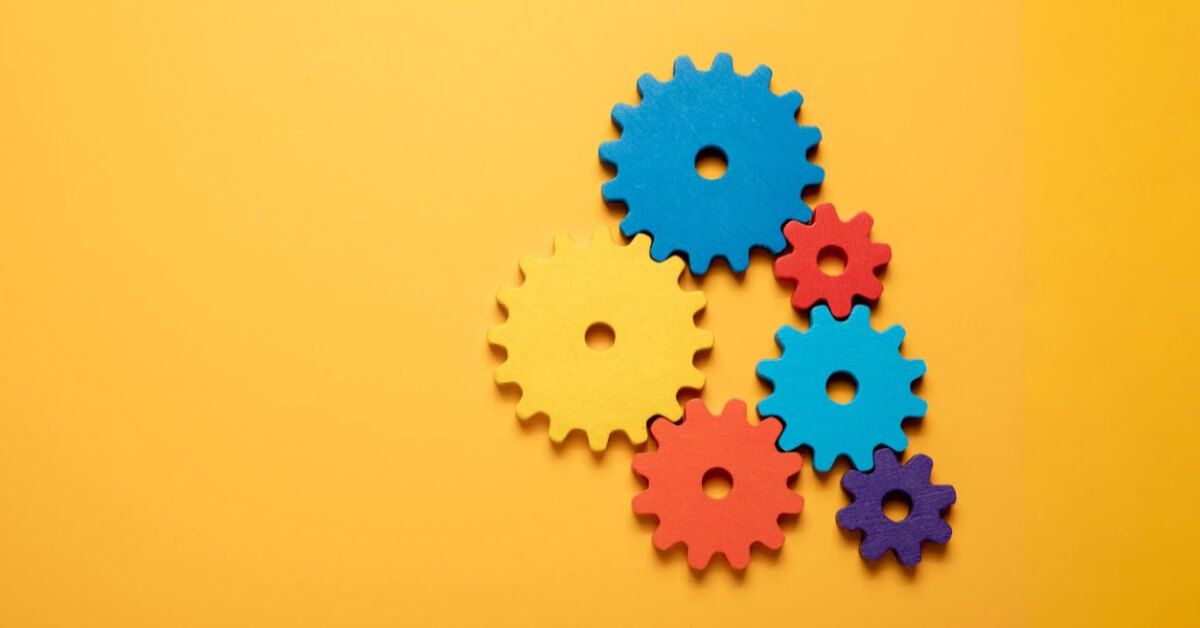35+ Employee incentive ideas your team will love (and actually use!)

Imagine you have two types of plants in your garden: a robust sunflower and a delicate bonsai tree.
The sunflower, with its tall, sturdy stalk and broad leaves, thrives with plenty of sunlight and water. It grows quickly, responding to the simplest care and basking in the open air. It’s like a team member who responds well to straightforward, high-impact incentives—generous bonuses or large team outings.
But the bonsai tree, on the other hand, is a different story. Its beauty lies in its intricate care: it needs specific pruning, just the right amount of sunlight, and attention to every little detail. A single misstep could stunt its growth. It’s like an employee who thrives with more personalized, thoughtful incentives—like skill-building opportunities or recognition for small, consistent achievements.
Incentives, much like plant care, need to be tailored to the unique needs of each individual. Understanding the balance of what drives each employee’s motivation is key to creating a thriving, engaged team.
What is an incentive for employees?
An incentive for employees is a reward or benefit designed to motivate and encourage employees to perform at their best. These incentives are used by organizations to boost productivity, improve employee satisfaction, and foster a positive workplace culture. Incentives can take many forms, from financial rewards such as bonuses to non-financial rewards like recognition programs, extra time off, or career development opportunities.
Incentives are often tied to performance metrics, ensuring that employees are rewarded for achieving specific goals or contributing to the company’s success. They can also be used to promote behaviors that align with company values, such as teamwork, innovation, or customer service excellence. A well-designed incentive program not only drives motivation but also helps in retaining top talent, as employees feel valued and appreciated for their contributions.
Ultimately, incentives are about recognizing hard work, setting clear expectations, and creating an environment where employees are eager to achieve both individual and organizational success.
What does it mean to incentivize employees?
Incentivizing employees goes beyond just offering rewards—it’s about motivating and guiding them toward achieving both personal and company goals. By crafting effective incentive programs, businesses can drive higher performance and create a more engaged workforce.
- To incentivize employees means to offer structured rewards that encourage them to take specific actions, meet defined goals, or demonstrate desirable behaviors that align with business objectives.
- It involves designing programs that go beyond salaries and job descriptions to actively influence employee engagement, motivation, and performance in measurable ways.
- Effective incentivization targets both intrinsic and extrinsic motivators by combining appreciation, growth opportunities, and tangible rewards that matter to employees at different stages of their careers.
- It requires clearly communicating what actions will be rewarded and ensuring consistency and fairness in how rewards are distributed across teams or departments.
- Incentivizing employees also includes monitoring outcomes to ensure that the rewards drive the intended behavior without creating unintended consequences or internal competition.
- It means recognizing and responding to what actually motivates your specific workforce rather than applying generic perks that may not resonate with everyone.
- Ultimately, incentivizing employees is a strategic approach that turns motivation into a measurable driver of business growth, productivity, and long-term team satisfaction.
Why are incentives important?

Incentives play a crucial role in driving productivity, retention, and engagement. A well-structured employee incentive program can directly impact business performance and employee satisfaction across all levels.
- Employee incentive programs help align individual goals with company objectives, making it easier to measure performance and reward employees based on clear, strategic outcomes.
- Incentive programs improve employee satisfaction by acknowledging achievements, encouraging loyalty, and reducing turnover rates, especially when combined with meaningful benefits and personalized rewards.
- Offering employee incentives such as bonuses, gift cards, or profit sharing increases motivation, especially in high-performing teams that thrive on recognition and results.
- A structured employee effective incentive program helps create healthy competition, drive innovation, and maintain high energy levels across departments working toward shared goals.
- Creative employee incentive program ideas, such as flexible hours or wellness perks, directly support work life balance while enhancing morale and overall productivity.
- Employee incentives help reinforce a performance-driven culture where effort is consistently recognized, and success is celebrated with tangible or experiential rewards.
- By implementing incentive programs tailored to different roles and departments, employers ensure all employees—from entry-level to leadership—feel valued, seen, and fairly compensated beyond their base pay.
Benefits of employee incentive plans
Employee incentive programs are not just about boosting performance—they’re powerful tools for retention, engagement, and morale. A well-designed plan can deliver measurable improvements in productivity and overall job satisfaction.
- Employee incentive programs help reward employees for hitting targets, exceeding expectations, or demonstrating initiative, reinforcing a culture of accountability and recognition.
- Effective employee incentive program structures, especially those with performance-based rewards like monetary incentives or profit sharing, increase motivation and drive consistent output across teams.
- Incentive programs support long-term retention by improving job satisfaction and making employees feel valued beyond their salary and job title.
- Employee incentives tied to personal milestones or achievements make recognition more meaningful and encourage continuous personal and professional growth.
- Introducing incentive ideas like flexible schedules, learning opportunities, or wellness benefits supports work life balance and contributes to employee well-being and loyalty.
- By recognizing employee achievements with a mix of monetary incentives and non-cash rewards, companies can appeal to different motivators and increase engagement.
- Well-executed plans that mix incentive ideas with strategic goals result in higher overall job satisfaction, better performance, and a more committed workforce across all levels.
Types of employee incentive programs (with examples)

Choosing the right employee incentive programs is key to engaging teams and encouraging top-tier performance. Below are seven powerful types of incentive programs, complete with examples to inspire your own strategy.
Monetary rewards
Cash bonuses, spot rewards, and performance-based commissions are among the most effective employee incentive ideas. These financial rewards offer immediate value and are particularly useful in roles where meeting or exceeding targets is critical.
They motivate employees through clear, measurable goals and reinforce a performance-driven culture. As part of a structured employee incentive program, they can greatly enhance short-term productivity and results.
Profit sharing
Profit sharing allows employees to receive a portion of the company’s earnings. This aligns individual performance with organizational success and builds long-term commitment by directly connecting employee contributions to financial outcomes.
Employees feel more invested in the company’s vision. This staff incentive program is ideal for driving retention, improving transparency, and cultivating a shared sense of ownership within the team.
Recognition programs
Public praise, digital badges, and employee of the month awards are creative employee incentive ideas that recognize everyday wins. Recognition programs foster appreciation and build a strong culture of encouragement across departments.
These programs encourage employees to support one another, reinforce core values, and consistently motivate positive behaviors. They are easy to implement and powerful in shaping a collaborative workplace culture.
Wellness programs
Wellness initiatives such as on-site health screenings, gym memberships, or meditation subscriptions show employees that their well-being matters. These programs support work-life balance while reducing burnout and absenteeism.
Offering rewards tied to health helps create a more sustainable, energized workforce. Wellness programs are increasingly popular in employee incentive programs that aim to support both physical and mental health.
Professional development
Covering certifications, online courses, or industry events is one of the best employee incentives for long-term value. Professional development shows that the company is committed to employees' career growth and learning.
These incentives contribute to both personal fulfillment and upskilling. Offering such career development opportunities retains top talent and creates a more agile, future-ready team prepared for evolving demands.
Non-monetary perks
Flexible work arrangements, hybrid options, and paid time off are highly valued non-monetary employee incentive programs. They improve job satisfaction and allow employees more control over their time and priorities.
When integrated into staff incentive programs, these perks enhance employee engagement without recurring financial costs. They are ideal for creating loyalty among employees who value flexibility over compensation.
Experience-based rewards
Spa days, concerts, or paid team retreats offer memorable incentives for employees. These experience-based rewards deepen team bonds and show appreciation beyond traditional financial incentives.
Such employee incentive ideas leave lasting impressions and often strengthen workplace relationships. They are particularly effective in enhancing workplace culture and making employees feel truly seen and celebrated.
What are common incentive mistakes?
- Relying only on monetary employee incentives like cash bonuses or gift cards can lead to short-term engagement but fail to build lasting loyalty or commitment among team members across different roles.
- Ignoring professional development opportunities such as mentorship, workshops, or tuition reimbursement limits employees’ long-term growth and reduces the overall value they gain from staying with the organization.
- Failing to include creative employee incentive ideas like flexible work arrangements or personalized perks misses the chance to connect with diverse employee needs and modern workplace expectations.
- Overlooking the role of senior leaders in participating or promoting incentives can create a disconnect in workplace culture, making programs feel insincere or optional.
- Offering monetary bonuses without clear goals or metrics can create confusion, lead to favoritism, and erode trust in how employees benefit from performance rewards.
- Not integrating incentives into the company’s values or ignoring their role in shaping a positive work environment can reduce their overall impact on morale and team cohesion.
- Treating incentives as one-size-fits-all instead of aligning them with different departments or roles leads to disengagement and underwhelming results in employee participation and satisfaction.
35+ Employee incentive ideas for your employees that go beyond bonuses

While monetary rewards like bonuses are common employee incentives, engaging your employees requires a broader approach. Here are 35+ creative ideas to engage employees, motivate positive behaviors, and support career growth.
- Flexible work hours: Allow employees to choose their schedules to better manage their personal lives, increasing overall job satisfaction and productivity.
- Career development workshops: Offer training programs to enhance skills and career growth opportunities, supporting both personal and professional development.
- On-site health screenings: Provide convenient access to health screenings to prioritize employees' well-being and show care beyond just work performance.
- Paid volunteer time: Allow employees to take time off for volunteer work, helping them feel valued and engaged while giving back to the community.
- Employee appreciation events: Host team-building activities or social events to foster stronger connections and engagement beyond daily tasks.
- Professional development stipends: Offer financial support for courses, certifications, or conferences to advance career growth and professional development behaviors.
- Gift cards for self-care: Provide gift cards for spas, restaurants, or fitness centers to promote self-care and relaxation, showing care for employees' personal lives.
- Peer recognition programs: Encourage employees involved in recognizing and celebrating each other’s achievements to create a positive work environment and increase motivation.
- Work-from-home options: Implement remote work policies to enhance work-life balance and boost employee morale, flexibility, and productivity.
- Family-friendly benefits: Provide parental leave, childcare support, or family health insurance benefits to show your commitment to employees' families.
- Subscription services: Offer subscriptions to services like meditation apps, audiobooks, or fitness programs, promoting employees' well-being and work-life balance.
- Team outings: Plan regular team-building trips or lunches to strengthen team collaboration and foster positive workplace culture.
- Fitness challenges: Motivate employees to engage in fitness activities through wellness programs, encouraging increased productivity and overall health.
- Tuition reimbursement: Support employees' educational goals by offering tuition reimbursement, helping them achieve career development behaviors and further their skills.
- Annual retreats: Organize company retreats focused on relaxation, professional development, and building team camaraderie outside the workplace.
- Extra vacation days: Offer additional paid time off as a reward for outstanding performance, helping employees achieve a better work-life balance.
- Recognition wall: Create a space for displaying employee achievements, fostering a sense of pride and reinforcing positive behaviors in the workplace.
- Job rotation programs: Allow employees to explore different roles within the company, providing opportunities for career growth and diversified skills development.
- Charity donations: Make donations to a charity of choice in the employee's name, showing care for their interests and social impact.
- Employee anniversary gifts: Celebrate work anniversaries with personalized gifts or experiences, showing appreciation for long-term contributions.
- Wellness challenges: Create fun and competitive wellness challenges, like step competitions or hydration goals, to motivate positive behaviors and promote healthier lifestyles.
- Personal development books: Provide employees with books focused on personal or professional growth to support continuous learning and career development.
- Customizable workspaces: Allow employees to personalize their workspaces with decor or ergonomic equipment to create a comfortable and motivating environment.
- Monthly lunch treats: Provide catered lunches or gift cards for food delivery as a small, thoughtful way to show appreciation and encourage team bonding.
- Anniversary celebrations: Celebrate work anniversaries with personalized celebrations or small gifts, acknowledging employees’ loyalty and contributions to the company’s success.
- Skill-sharing sessions: Encourage employees to share their unique skills or hobbies with colleagues through lunch-and-learn sessions, promoting career development behaviors and cross-departmental collaboration.
- Pet-friendly policies: Allow employees to bring their pets to work on designated days, offering a stress-relieving environment and boosting workplace morale.
- Employee suggestion programs: Implement a system where employees can submit ideas to improve processes or the workplace, fostering a culture of involvement and increased productivity.
- On-the-spot recognition: Create a system for immediate, spontaneous recognition of outstanding contributions, motivating employees to consistently perform well and encouraging positive behaviors.
- Employee swap programs: Set up a program where employees can swap roles or job functions temporarily to gain new experiences, boosting career growth and enhancing workplace collaboration.
- Mental health days: Offer employees additional paid leave days specifically for mental health, encouraging them to take the time they need to recharge and avoid burnout.
- Professional networking opportunities: Provide access to industry events or professional networking groups, supporting employees in expanding their career connections and learning from industry leaders.
- Employee of the month parking spot: Dedicate a prime parking spot to the "Employee of the Month" as a simple but effective way to recognize achievements and motivate others to perform at their best.
- Company swag: Gift employees with branded merchandise, such as clothing, water bottles, or office supplies, to make them feel like valued brand ambassadors and boost company pride.
- Public recognition in company meetings: Celebrate achievements by publicly acknowledging employees' hard work and contributions during all-hands meetings, making them feel seen and appreciated.
- Wellness stipends: Offer employees a monthly stipend for health-related expenses, like gym memberships, fitness classes, or wellness apps, to encourage healthy lifestyles.
- Personalized career growth plans: Work with employees to create tailored career development plans that align with their goals and aspirations, demonstrating your commitment to their long-term success.
Effective employee incentive program ideas for a remote team
Managing a remote team requires creative and engaging employee incentive programs that foster productivity, morale, and positive work culture. Here are seven effective ideas to motivate and reward your remote team members.
- Wellness incentives: Offer wellness initiatives like gym memberships, meditation app subscriptions, or health challenges to treat employees’ well-being, boosting both physical health and employee performance.
- Direct payments or gift cards: Provide direct payments or virtual gift cards as quick employee rewards for meeting milestones. This allows employees to treat themselves, enhancing their sense of appreciation and engagement.
- Virtual team-building activities: Host online team-building exercises such as virtual happy hours, trivia games, or workshops to build stronger workplace relationships and inspire employees to stay connected and engaged.
- Recognition and shoutouts: Publicly recognize top talent through video calls or team chats to celebrate achievements, reinforcing positive work culture and motivating employees to continue performing well.
- Career development rewards: Offer career growth opportunities like online courses or certifications to inspire employees to pursue professional development, strengthening long-term loyalty and enhancing team members' skills.
- Flexible time-off or paid days: Reward employees with extra paid time off or flexible schedules to improve their work-life balance, showing that you value their personal life while also motivating high performance.
- Personalized employee incentive ideas: Customize rewards based on individual preferences, such as a donation to their favorite charity or a personalized gift, to treat employees with thoughtful incentives that resonate on a personal level.
How to choose the right incentive ideas for your team

Choosing the right incentive ideas for your team is key to ensuring that employee incentives resonate with your staff and drive results. Here’s how you can make effective choices.
- Align incentives with employee engagement goals: Incentives should focus on motivating employees to achieve the company's goals while enhancing overall engagement. Offering rewards that align with team objectives encourages employees to stay motivated and connected to the organization’s vision.
- Incorporate professional development opportunities: Providing career development opportunities, such as workshops, certifications, or mentorship, allows employees to grow and feel supported in their careers. These incentives can lead to increased job satisfaction and long-term loyalty.
- Offer a mix of monetary employee incentives and non-financial rewards: While financial rewards like bonuses or profit-sharing programs are effective, offering a balance with non-monetary employee incentives—such as flexible work arrangements or recognition programs—appeals to diverse employee needs.
- Tailor incentives to employees’ lives: Understand that employees have different priorities. Offering rewards that support personal goals, such as wellness programs or additional paid time off, shows employees that their life outside of work matters.
- Involve employees in choosing incentives: Ask employees for input when designing employee incentive programs to ensure that offerings resonate with them. This involvement increases the perceived value of the rewards and boosts motivation.
- Offer a variety of staff incentives: A combination of monetary and non-monetary incentives ensures a holistic approach, motivating employees in different ways. Offering flexible incentives allows employees to choose what aligns best with their personal and professional goals.
- Ensure consistency and fairness: The best employee incentives are those that are offered consistently and fairly. Ensure that rewards are accessible to all team members, promoting equality and a positive work culture.
5 Best practices for employee incentive programs
Implementing the right practices in your employee incentive program ensures that it motivates and engages employees. Here are five best practices to follow for creating an effective and impactful program.
- Align incentives with company goals: To inspire employees, your incentive programs should align with the company’s objectives. When rewards reflect company priorities, employees feel more motivated to contribute their best work and achieve the company’s vision.
- Offer a variety of employee incentive ideas: A mix of monetary rewards, flexible work arrangements, and professional development opportunities ensures that employees feel valued in different ways. Offering diverse incentives for employees accommodates individual preferences and enhances overall engagement.
- Recognize and reward top talent consistently: The best employees incentives should be given consistently to top talent. Recognizing high performers regularly boosts morale and motivates all employees to strive for excellence, strengthening workplace culture and driving higher productivity.
- Make incentives attainable and transparent: Employees feel more motivated when they understand the criteria for earning rewards. Setting clear and achievable targets helps employees stay focused on their goals, and transparency fosters trust within the team.
- Personalize incentives to fit employees’ needs: Tailor rewards based on employees' preferences and career development opportunities. Whether it’s financial rewards, additional time off, or wellness programs, personalizing incentives increases the chances of retaining top talent and engaging staff.
How to effectively run employee incentive programs

Running an effective employee incentive program involves careful planning and consistent execution. Here are some key strategies to ensure your program achieves its desired outcomes.
- Define clear objectives and goals: Start by setting clear, measurable objectives for your employee incentive program. Ensure that the incentives align with company goals, such as increasing productivity, improving employee engagement, or supporting career growth.
- Ensure fairness and transparency: Make the criteria for receiving incentives clear to all employees. When staff members understand what is expected to earn rewards, they feel motivated to perform at their best, knowing the process is fair and transparent.
- Communicate the program effectively: Ensure all employees are aware of the employee incentive program. Clearly communicate the types of rewards available, the goals to be achieved, and how employees can get involved. Consistent communication helps keep employees engaged and informed.
- Provide a mix of incentives: Offer a combination of monetary rewards and non-monetary incentives like professional development opportunities, flexible work arrangements, and wellness incentives. This variety will appeal to different employee needs and preferences.
- Regularly assess and adjust the program: To ensure the program’s effectiveness, regularly review its impact on employee performance and satisfaction. Use employee feedback to adjust the incentives and make improvements, keeping the program fresh and relevant.
Team and culture-centered incentives for belonging and retention
Building a strong team culture is essential for employee retention and creating a sense of belonging. Here are key incentives that can strengthen team dynamics and support long-term employee loyalty.
- Foster team collaboration through recognition: Create recognition programs that celebrate both individual and team accomplishments. Acknowledging team achievements publicly reinforces a sense of belonging and motivates employees to continue collaborating and performing at their best.
- Provide career growth and development opportunities: Offering professional development initiatives such as training, mentorship, and workshops not only improves skills but also strengthens the bond employees feel with the company. This encourages long-term commitment and aligns personal growth with organizational success.
- Promote work-life balance with flexible policies: Incentives like flexible work hours or remote work options enhance employees’ work-life balance, making them feel valued beyond their role. When employees can manage their personal lives effectively, retention improves and workplace morale rises.
- Encourage social connection through team-building activities: Organize team-building exercises, whether virtual or in-person, that foster deeper interpersonal relationships. These activities help employees feel part of a cohesive group, strengthening team spirit and encouraging long-term retention.
- Incorporate wellness initiatives into the company culture: Offer wellness incentives like gym memberships or mental health days to support employees’ well-being. When employees feel their health and happiness are prioritized, they’re more likely to stay loyal to the company.
How to measure the impact of your employee incentive program

Measuring the effectiveness of your employee incentive program is crucial to ensure that it’s delivering the desired results. Here are key ways to evaluate the impact of your program.
Track employee performance metrics
Monitor Key Performance Indicators (KPIs) related to employee productivity, engagement, and goal completion. If employees consistently meet or exceed targets after receiving incentives, it’s a clear indicator that the program is effective.
Conduct regular employee surveys
Use surveys to gather direct feedback from employees about their satisfaction with the incentives. Understanding their perspective helps you assess whether the incentives are motivating them and whether they feel valued.
Analyze employee retention rates
Measure changes in retention and turnover rates before and after implementing the incentive program. A significant improvement in retention is a positive sign that your employee incentives are fostering loyalty and reducing attrition.
Evaluate the program’s ROI
Calculate the return on investment (ROI) by comparing the cost of the incentive program to the benefits it brings, such as increased productivity or higher employee satisfaction.
Observe changes in workplace culture
Monitor shifts in workplace morale, team collaboration, and overall company culture. A positive change in these areas often signifies that the incentives are effectively promoting a more engaged and motivated workforce.
How employee satisfaction surveys can help with what your employees think about incentives
Employee satisfaction surveys are powerful tools to understand how your team truly feels about your employee incentive programs. Here’s how they can provide clarity and drive improvements in your incentives strategy.
Identify which incentives employees value most
Surveys reveal which types of employee incentives—monetary, flexible work options, or development opportunities—are most appreciated. This insight helps you focus on incentive ideas that truly resonate with your team.
Uncover gaps in your current employee incentive program
Satisfaction surveys can highlight if employees feel certain incentives are missing, ineffective, or unfair. This allows management to adjust programs before disengagement or turnover becomes an issue.
Measure overall sentiment toward staff incentive programs
Survey results reflect how employees feel about the fairness, relevance, and impact of current staff incentives. This direct feedback ensures programs evolve based on real employee sentiment, not assumptions.
Support inclusive decision-making for future incentives
By asking employees for their input, you show that their opinions matter. This inclusive approach improves employee engagement and makes future incentives more aligned with actual needs and expectations.
Track changes in perception over time
Conducting surveys periodically helps measure how employees’ views about employee incentive programs change. This ongoing feedback loop ensures your strategy remains effective and continuously improves based on employee input.
Conclusion
Finding the right employee incentive ideas goes beyond offering perks—it’s about understanding what truly resonates with your team. Whether it’s wellness programs, recognition, or career growth opportunities, the best incentives are those that align with your employees’ values. That’s where CultureMonkey can help.
With its anonymous employee engagement surveys and real-time feedback tools, CultureMonkey gives you clear insights into what motivates your people. Instead of guessing, you can build targeted, meaningful incentive strategies that actually move the needle on engagement and retention. Because when your incentives are backed by data, you’re not just offering perks—you’re building a workplace where people feel heard, valued, and excited to grow.
Summary
FAQs
1. How can employee incentive programs boost productivity and motivation?
Employee incentive programs boost productivity by aligning employee goals with company objectives. They encourage top performance, create a sense of accomplishment, and provide recognition for achievements. Well-structured programs increase motivation, enhance job satisfaction, and drive employees to consistently meet or exceed expectations, leading to higher overall performance. They help foster a positive work culture and improve long-term employee engagement and retention, benefiting both the team and the organization.
2. Why should we use monetary employee incentives instead of regular verbal appreciation?
Monetary employee incentives are tangible rewards that offer immediate gratification and clear value. Unlike verbal appreciation, they provide measurable recognition, aligning employees' contributions with financial rewards. These incentives not only motivate but also improve retention, as employees feel their efforts are properly valued, driving higher productivity and commitment to company success. They offer employees a direct, impactful way to feel recognized.
3. Do remote teams need more incentives?
Remote teams often need more incentives due to limited face-to-face interaction and potential feelings of isolation. Incentives help bridge the gap, keep morale high, and maintain engagement. Remote employees benefit from clear recognition of their efforts, and well-designed incentive programs encourage motivation, ensure alignment with company goals, and build a sense of belonging, leading to higher job satisfaction and productivity.
4. What are some unobvious ways to make employees feel good?
Unobvious ways include offering flexible work schedules, creating opportunities for personal growth through professional development, celebrating milestones, and providing wellness initiatives. Simple gestures like personalized thank-you notes, team-building activities, or surprise days off can create a positive environment, strengthen workplace culture, and make employees feel valued beyond traditional rewards. Additionally, fostering open communication and recognition further enhances employee satisfaction.
5. How often should I incentivize my employees?
Incentivizing employees regularly, such as quarterly or after significant milestones, helps maintain motivation and engagement. However, the frequency should be balanced to avoid diminishing the value of rewards. Offering incentives at key moments—such as after project completions, successful collaborations, or meeting targets—ensures recognition remains meaningful and impactful. Strategic timing keeps employees motivated and reinforces their contribution.



